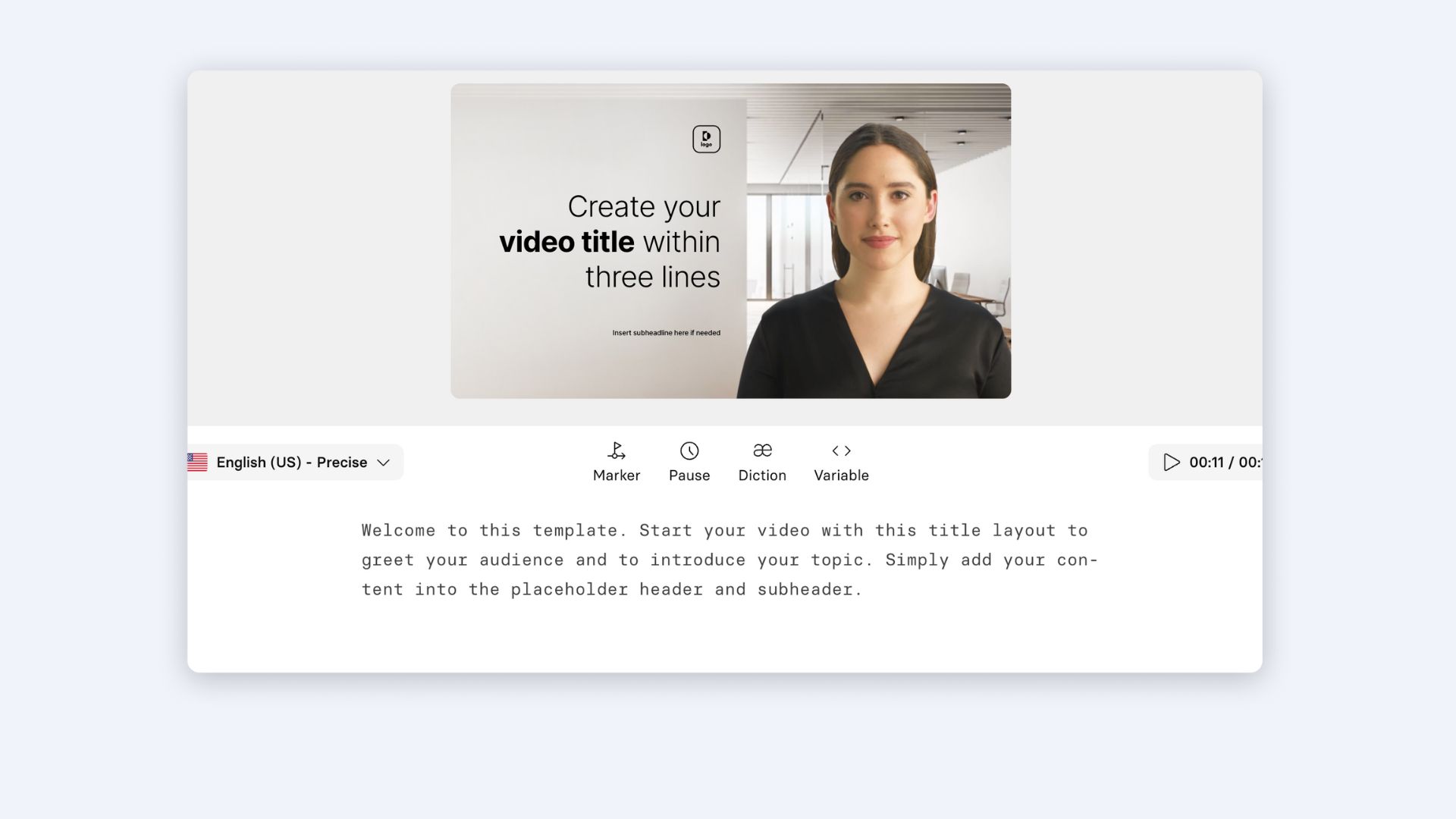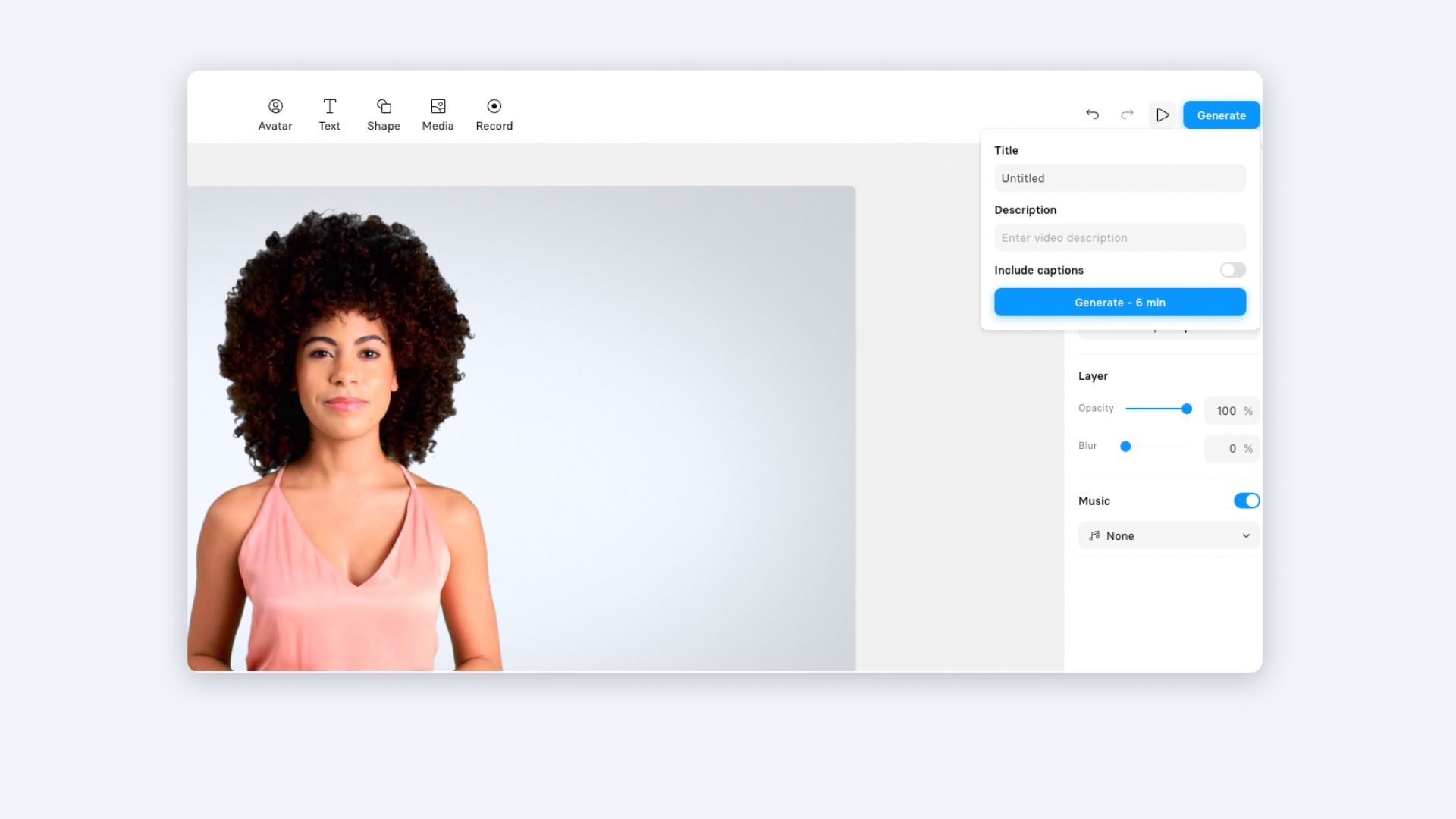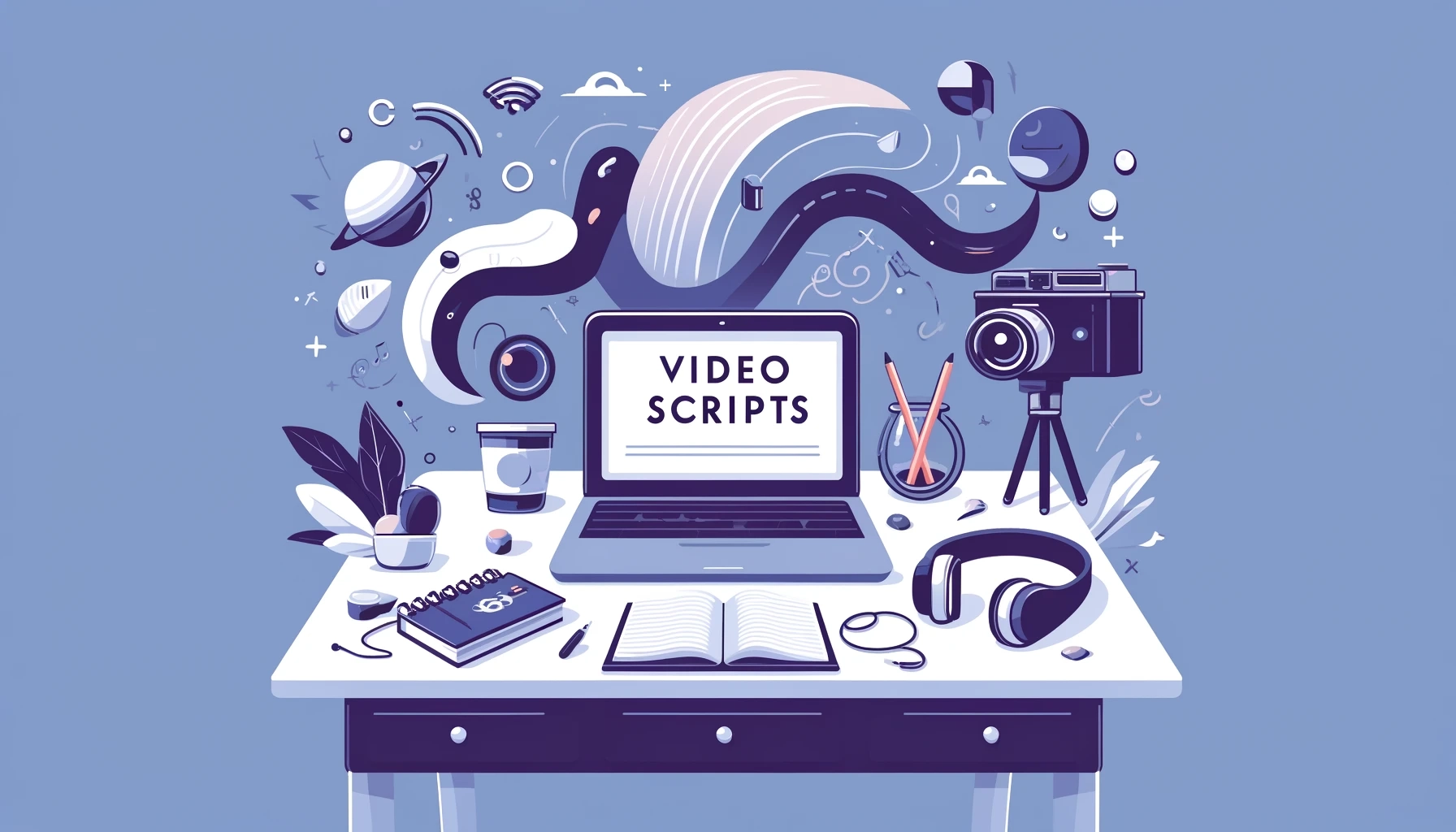

Turn your texts, PPTs, PDFs or URLs to video - in minutes.

Does anybody remember the 2nd episode of the 1st season of The Office, 'Diversity Day?'
You know, that very cringe one, where Michael Scott creates his own diversity seminar with a ludicrous role-playing game based on stereotypes?
If there's one thing that the episode taught us, is that diversity training should be as far removed from that as possible.

So we know what not to do, but how do we then make diversity and inclusion training fun and engaging without being cringy and outright ignorant?
With personalized diversity and inclusion videos, like this one 👇 📹
Keep reading to learn why videos are the perfect instruments for teaching inclusion training, and how to make custom training videos with AI.
Why make personalized diversity and inclusion training videos?
In today's world, it's no secret that video is king.
With the advent of social media, video content has become more accessible than ever before. And with people's increasingly short attention spans, it's no wonder that videos are so popular.
But why are videos so effective? 🤔
1. Videos are more engaging than text
Studies have shown that viewers retain 95% of a message when they watch it in a video, as opposed to just 10% when they read it in text. This is because the human brain is hardwired to process visual information more effectively than text.
So when you want to get your message across, a video is always going to be more effective than a text-based message.
2. They allow employees to learn at their own pace
Not everyone learns at the same speed, which is why personalized training videos can be so beneficial. Employees can watch the videos at their own pace and replay them as many times as they need to fully understand the material.
3. They make it easier for managers to monitor employee progress
With personalized training videos, managers can easily track employee progress and identify any areas where further training may be necessary. This helps to ensure that diversity and inclusion goals are being met.
How to make a diversity training video in 7 minutes using AI
Making a diversity training video doesn't have to be time-consuming or expensive.
Using an online video maker called Synthesia, you can easily create a high-quality video in just a few minutes, without any equipment or editing skills.
Here's how 👇
Step 1: Condense your written resources into a video script
Before you start creating your diversity training video, it's important to sit down and write a script.
This will help to ensure that your video covers all the key points and flows smoothly.
Start by outlining the main topics you want to cover, and then flesh out each section with more detail. Include examples and real-life scenarios to illustrate your points, and make sure to leave time for questions at the end.
Check out our comprehensive guide on writing a training video script for more information.

Step 2: Choose a video template
To save yourself even more time, start off with a customizable video template instead of designing the video from scratch.
A template will give you a solid outline and design foundation that you can then personalize.
To choose a template in Synthesia, click on 'Templates' on the left-hand side, choose a template and click on 'Create video.'

Step 3: Create an AI voiceover
Take your script from the 1st step and paste it into your template slide by slide.
Synthesia will use that text to generate an AI voiceover using text-to-speech technology.
This feature allows you to create localized videos in 120+ languages by simply pasting in text in your target language.

Here's how this works, in case you're curious:
Step 4: Visualize voiceover
Make your video more engaging and personalized by adding custom visuals, like:
- text on screen
- custom or stock backgrounds, images, videos
- shapes, icons, fonts
- AI avatars that act as presenters
Confused about that last point?
We'll let an AI avatar explain:
Step 5: Generate video
That's it!
Generate the video and share it with the team!

Make your next diversity training day more engaging
So the next time your company is gearing up for Diversity Day, skip the cringe-worthy stock training video and try making a customized diversity video instead.
It’s more fun, engaging, and memorable for everyone involved – not to mention it will help you avoid any Michael Scott-esque embarrassments.
Try making a free AI video to see Synthesia in action.
Frequently asked questions
What should a diversity training program include?
A good diversity training course should cover a wide range of topics, from the history of discrimination to the challenges of creating an inclusive and respectful workplace.
It should also be interactive, engaging employees in discussions and exercises that help them understand their unconscious bias and its negative consequences.
Additionally, the course should be tailored to the needs of the workplace, taking into account its size, industry, and national origin.
What are the 7 key areas of diversity and inclusion?
There are 7 key areas of diversity and inclusion: culture and stereotypes, racism, religion, age, gender, orientation, and disability:
- Stereotypes around cultures can lead to discrimination and exclusion based on assumptions and preconceptions.
- Racism is a form of discrimination that can be based on race, ethnicity, or national origin.
- Religion can also be a source of discrimination, whether it is directed at particular beliefs or believers in general.
- Ageism is another form of discrimination that can lead to different treatment based on a person's age.
- Gender discrimination can take many forms, from unequal pay to sexual harassment.
- Orientation discrimination refers to the unequal treatment of people based on their sexual orientation or gender identity.
- Disability discrimination can take many different forms, from inaccessible buildings to workplace accommodations.
All of these areas are important to consider when creating a diverse and inclusive environment.
What makes good diversity training?
Good diversity training should be designed to promote awareness and understanding of diversity and inclusion, and to provide employees with the knowledge and skills they need to work effectively in a diverse environment. Here are some key elements that make good diversity training:
- Clear learning objectives
- Interactive and engaging content
- Inclusive language
- Real-life examples
- Ongoing support
- Evaluation











